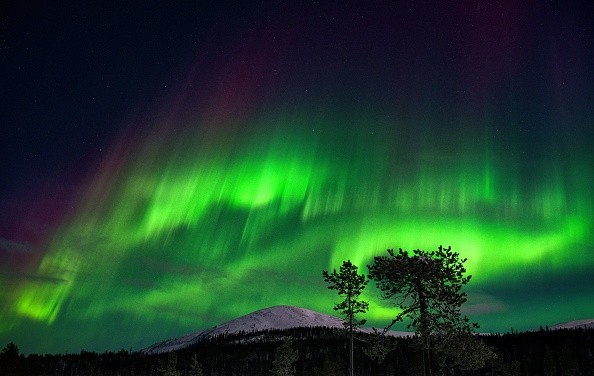The Earth's magnetic field protects us against solar wind and other space weather, but it isn't perfect. A new mechanism in Earth's space environment has been found by researchers, allowing solar particles to bypass the planet's initial line of defense.

Interaction Between Earth's Magnetic Field and Supersonic Particles
When Earth's magnetic field frequently interacts with the sun's supersonic particles a small-scale plasma jet is produced. This plasma jet is capable of weakening the barrier's shield against space weather effects, which can also prompt disruption of power grids and satellite communications and not just the production of aurorae, as per Phys.org.
When the speed of supersonic solar wind is slowed by Earth's magnetosphere, high-pressure jets can form. Researchers from KTH Royal Institute of Technology in Stockholm published their findings in Nature Communications.
As stated by lead author Savvas Raptis, a doctorate student at KTH, the findings can be applied to any situation.
Raptis said the findings "may be fundamental in shocks." It's possible that they exist in different plasma environments, which can be found anywhere in the cosmos, from astrophysical objects to other planets, including on Earth.
Formation of Downstream Jets From Bow Shock
A bow shock is formed when plasma collides with the Earth's magnetic field, which is generated from the core of the planet. The transition zone known as the magnetosheath is located beyond this point.
According to News Axes, when plasma is compressed and heated, it tends to remain uniform, but the waves and particles in the stream interact, sometimes resulting in novel phenomena.
Jets with a dynamic pressure larger than the solar wind can be formed as a result of this dynamic.
These downstream jets were observed to arise as a direct result of upstream wave evolution and bow shock reformation using instrumentation aboard NASA's four Magnetospheric Multiscale Mission (MMS) satellites, according to Raptis.

Importance of Magnetospheric Multiscale Mission (MMS)
Raptis argues that small-scale research is essential in order to have a better understanding of Earth's space environment. Research in recent decades has focused mostly on large-scale changes that are linked to solar activity, he says.
The Earth's bow shock and its accompanying phenomena, such as magnetosheath jets, play a vital role in the discovery of smaller-scale events.
He also said that MMS which launched four spacecraft into Earth's orbit in 2015, demonstrates the value of missions like this one, which allowed for high-resolution views of the magnetosphere at work.
With the MMS mission, KTH experts like Raptis's co-authors Tomas Karlsson and Per-Arne Lindqvist, a professor of plasma physics at KTH, helped develop components and continue to do research on the mission's data.
According to Raptis, it was possible to spot sections of the Earth's orbital environment that had never been seen before.
"We were able to observe previously unexplored parts of the Earth's surrounding space environment," Raptis says.
For more news, updates about Earth's magnetic field and similar topics don't forget to follow Nature World News!
© 2025 NatureWorldNews.com All rights reserved. Do not reproduce without permission.





